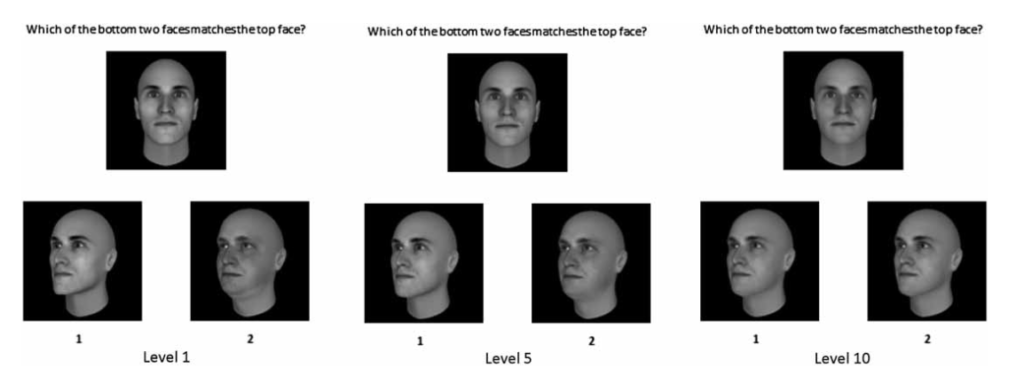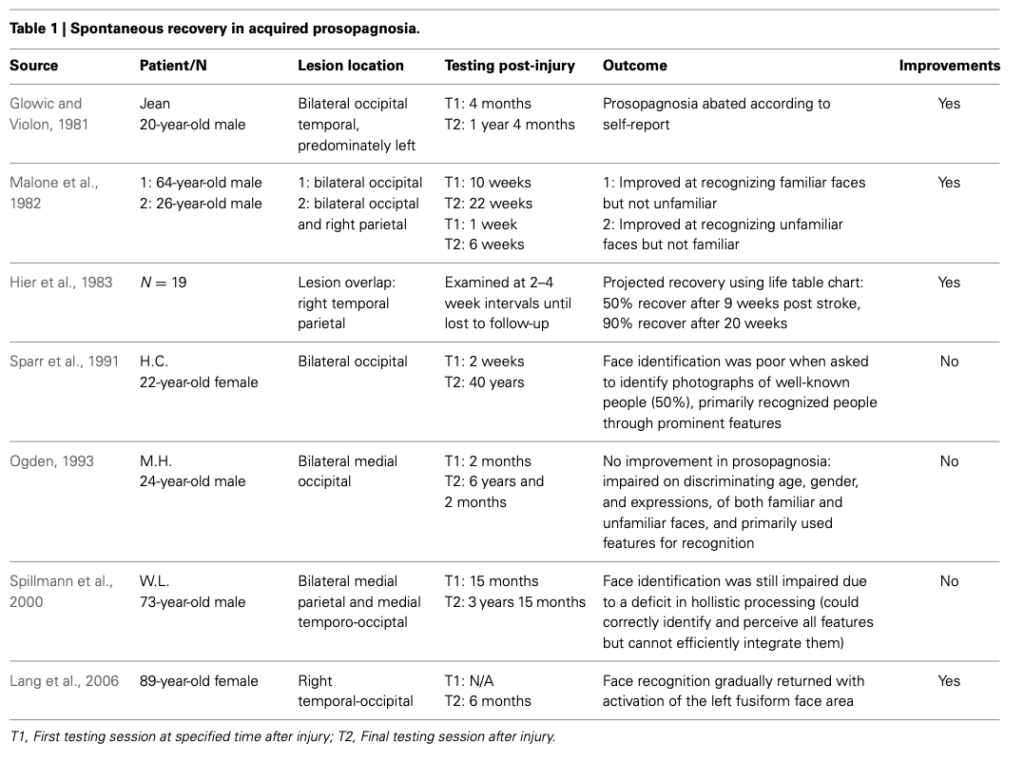There are several types of therapies or programs that are intended to achieve improvements. These types of therapies are used to learn how to work around all the deficits and focus on parts of the face. These are programs that I found during my research, but there are a lot more. So the selection is as follows:
- Comparison of photos of unknown and known faces
- Learning face-name associations
- Identifying which face of a selection of faces best matches the target face
- Distinguishing images of real or computer-generated people.
- Electrical stimulations
- Semantic association chain with additional information about the shown faces
- Faces of targets as caricatured versions for recognition
- Participants’ attention is drawn to prominent facial features
- Only the eye area is shown and participants are asked to say what thoughts and feelings are shown
- Two faces are shown and participants should determine age and gender
- Faces that look similar or the same should be matched into pairs
According to several studies and a wide variety of tests, the most helpful programs for AP are those that direct attention to prominent facial features, in other words encoding strategies. Age as well as gender, origin or handedness have no effect on whether improvement is possible or not.
To give a little more insight into one of the many types of therapies, here is one of the methods. A computer game has been developed in which the participant must determine the faces with the greatest similarity to the target face. This game has 10 levels, which become increasingly difficult and challenging depending on the successful completion of the previous levels. Each level consists of searching for a target face from a selection of several faces. The faces searched for were presented frontal or slightly from the side. The further the level, the fewer similarities the faces had with the target face. However, in order to see the first successes, a lot of time must be taken into account. The picture below shows three levels of the game.


(Next up in Part 3: Treatment approaches in developmental Prosopagnosia)
Sources
- Face Processing Improvements in Prosopagnosia: Successes and Failures over the last 50 years, Joe DeGutis, Christopher Chiu, Mallory E Grosso, Sarah Cohan (8.2014), https://www.researchgate.net/publication/264940858_Face_Processing_Improvements_in_Prosopagnosia_Successes_and_Failures_over_the_last_50_years
- Rehabilitation of face-processing skills in an adolescent with prosopagnosia: Evaluation of an online perceptual training programme, Sarah Bate, Rachel Bennetts, Joseph A. Mole, James A. Ainge, Nicola J. Gregory, Anna K. Bobak, Armanda Bussunt (04.11.2019), https://www.researchgate.net/publication/343935303_Prosopagnosia